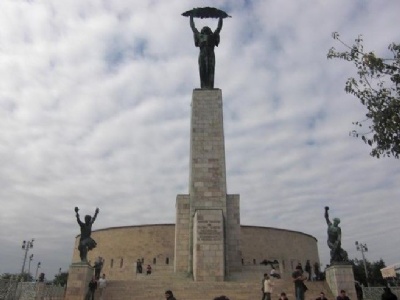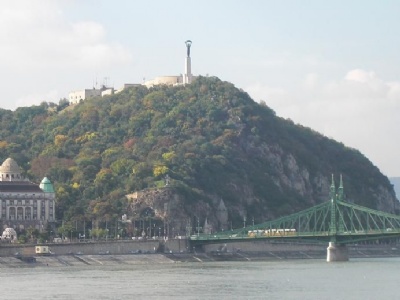Budapest Citdadel
On December 29, 1944, Budapest was surrounded by Soviet forces. In January 1945, German units attempted to rescue the besieged forces in Budapest but were forced to retreat after barely two weeks of fighting. Supplies for the units inside the city were flown in via aircraft that landed on the long avenues in the western part of the city (Pest). As the Soviet forces advanced into the city, the German defenders offered fierce resistance and battles were fought not only on the streets and in houses, but also in the sewer system. On January 20, the Germans attempted a second offensive to recapture the city but failed due to a lack of supplies and a determined heavily armed enemy. The besieged german forces then requested permission from Hitler to break out of the city, but Hitler refused and ordered that the city be defended to the last man.
The Buda district, located on the east side of the Danube, is much more hilly than the west side and thus more easily defended. The Germans had also blown up all the bridges over the Danube to make the Soviet offensive more difficult, but the soviet offensive kept going and soon soviet engineering troops had established temporary bridges. At a height called Gellert there was citadel furiously defended by Waffen-SS units. But the overpowering soviet forces pushed made the situation untenable. And when the vital supplies ceased to come the German commander Pfeffer-Wildenbruch ordered a break-out of the remaining troops, despite Hitler’s explicit orders not to. On February 11, almost 30,000 men began to break-out, but the Soviet Union already knew about the plans and were prepared. Very few German and Hungarian soldiers reached the German lines and the remaining troops finally surrendered on 13 February.
Current status: Preserved with museum (2010).
Address: Citadella sétány, 1083 Budapest.
Get there: Bus.
Follow up in books: Ungvary, Krisztian: Battle for Budapest: One Hundred Days in World War II (2004).





The citadel still bears clear traces of the fighting. After the war, the Soviet Union established a monument of freedom at the citadel in memory of the victory over Nazi Germany. For the Hungarians, the monument was rather a symbol of the soviet occupation, but unlike other soviet and communist monuments that were removed after the fall of communism in 1989, the monument of freedom remained. This has nothing to do with the victory over Nazi Germany, but rather that the monument has become a strong symbol of Budapest. The museum at the citadel is located in a bunker used by the Germans. The exhibition consists mainly of wax dolls. The citadel is a major tourist attraction.